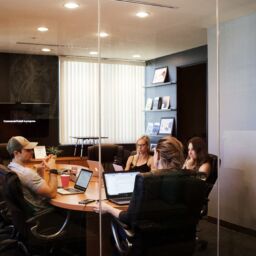
The ‘great resignation’ might be over, but that doesn’t mean your employees aren’t restless and are potentially looking to make a change. A recent survey of almost 60,000 workers found that employees were happier and more satisfied during the pandemic than today. So, what can you do as a leader to help combat employee restlessness? Today I’m sharing a few tips that will help your team do just that:
1.Promote human connection
Are you building a foundation of trust and promoting connection? Human connection is one of the most undervalued and effective retention strategies at your fingertips. McKinsey recently found that 46% of workers cite an unmet desire to work with people who trust and care for each other as a reason to quit. With some thoughtful effort, promoting employee connection is easily within reach:
- Remember, it starts on day 1. Something as simple as having their favorite coffee drink waiting at their desk or sending lunch to their house if working remotely can be the small gesture of connection that will set the tone.
- Don’t be afraid to get personal. Go deeper than after-hour company gatherings to promote connection. Ask for employee birthdays, kid’s sports involvement, pet adoptions, and on – and help them celebrate big and small!
2. Empower your leaders.
For some leaders, people management comes naturally; for others (and often a majority), they are busy and forget the basics or need more fundamental training. Promoting the right skills with your team can get the ball steadily rolling. While hard skills are essential, soft skills will likely keep employees motivated, connected, and happy.
3. Make time for self-reflection
The power of self-reflection is real. Research shows that reflection is something we should do more frequently in life. Why? Because it helps us learn and boosts performance. If employees struggle to find the time, I often encourage them to start by swapping out 10 minutes of social scrolling and dedicate that time to self-reflection as a place to start.
The following steps from Harvard Business Review are a great place to start If you would like to practice self-reflection at work:
- Identify important questions ahead of time. For example, you can ask yourself the following questions: How could I have been more effective on my most recent project? How am I supporting my colleagues in doing their best work? How am I hindering them?
- Schedule time on your calendar. Most of us won’t reflect at work unless we actively create time and space to do so. Setting a recurring 15-minute reminder might help keep you accountable— it’s a great end-of-the-week activity!
- Select a reflection process that you enjoy. You can journal, chat with a colleague, take a walk, reflect on your commute home, or even reflect from the comfort of your bed – pick whatever works best for you!
- Don’t overdo it. Start with reflecting for 10 minutes. Reflection is like meditation; most of us are out of practice and not ready to jump into an entire 30-minute session on day one.
If employees struggle to find the time, I often encourage them to carve out 10 minutes of LinkedIn (or any social scrolling) and dedicate that time to self-reflection instead. You will be surprised by the impact!
4. Hire a commitment partner
Consider investing in a dedicated partner to help support your team for long-term success. Keystone can help your organization develop Conscious Leaders who embody the softer skills needed to build human connection. Get in touch to learn more about our 3-series program that is designed to build and grow leaders who have an impact on their teams and business. https://www.keystonegroupintl.com/contact/















